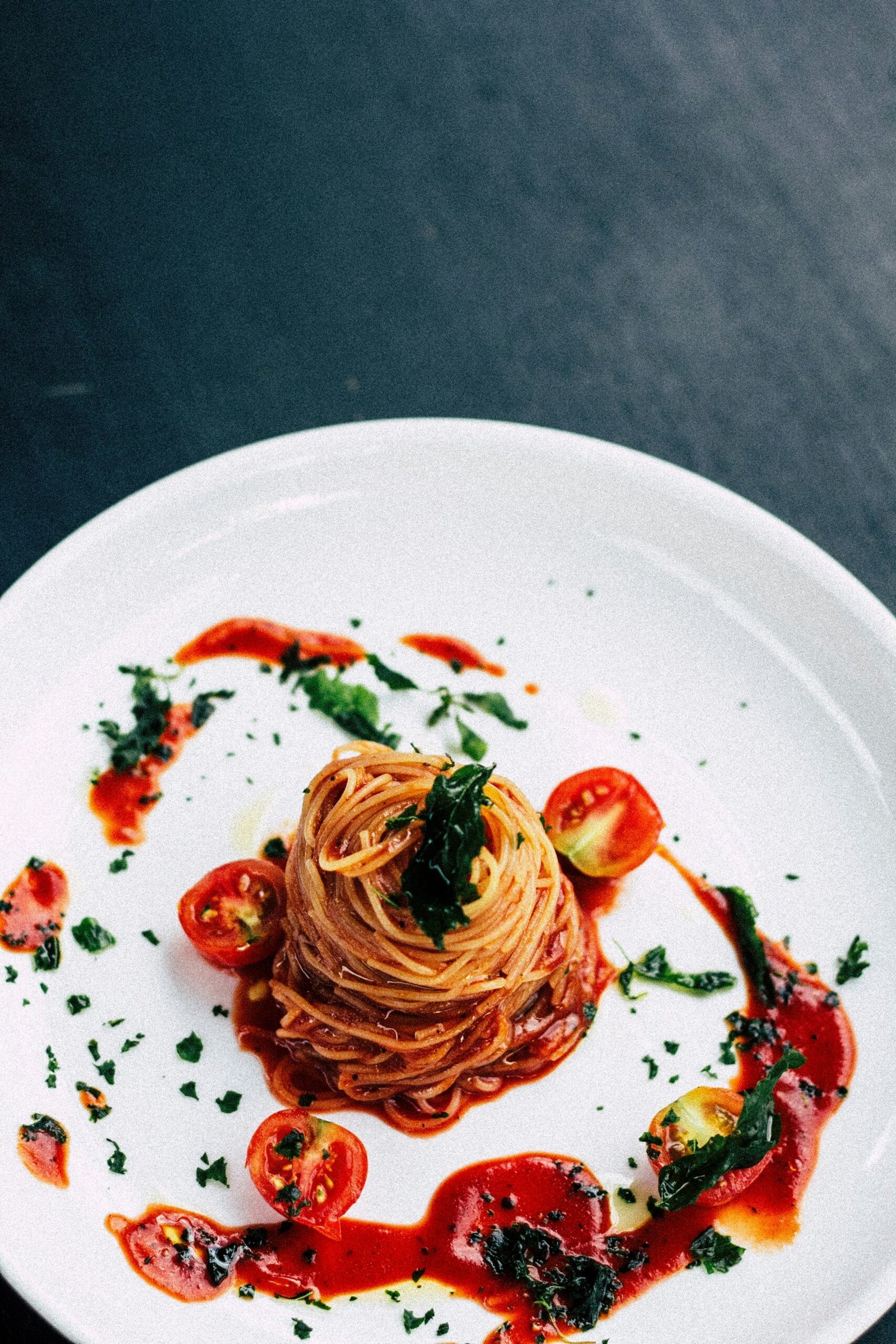Introduction to Italian Pasta Cuisine
Italian pasta is more than just a staple food; it is an integral part of Italy’s rich culinary heritage. With roots tracing back to ancient times, pasta has evolved from a simple, rustic meal to a sophisticated dish that represents the epitome of Italian culinary art. Its significance in Italian cuisine cannot be overstated, as it embodies the very essence of the country’s gastronomic traditions. Historically, pasta was initially a humble food, easily accessible and affordable, making it a common meal for the masses. Over centuries, it has transcended social boundaries and regional limitations, becoming a beloved dish worldwide.
Each region in Italy boasts its own pasta specialties, reflecting local ingredients and culinary practices. From the hearty lasagna of Emilia-Romagna to the delicate tagliatelle of Tuscany, and the unique orecchiette of Puglia, the diversity in pasta dishes is a testament to the country’s rich and varied landscape. This diversity not only highlights the versatility of pasta but also underscores its cultural importance, as each region takes pride in its authentic recipes and traditional cooking methods.
The types of pasta are as varied as the regions they come from. Long pasta such as spaghetti and linguine are perfect for lighter sauces, while short pasta like penne and rigatoni are ideal for holding thicker, heartier sauces. Filled pasta, such as ravioli and tortellini, offer a delightful surprise with every bite, often filled with cheese, meats, or vegetables. Each type of pasta has been meticulously crafted to pair with specific sauces and ingredients, ensuring a harmonious blend of flavors and textures.
Understanding the historical and cultural significance of pasta provides a deeper appreciation for the recipes and techniques that have been passed down through generations. As we delve into these classic Italian pasta dishes, we celebrate not only the flavors but also the traditions that make Italian cuisine a global favorite.
Essential Ingredients and Techniques
To master the art of Italian pasta, it is crucial to understand the foundational ingredients and techniques that elevate these dishes to culinary excellence. Authentic Italian pasta recipes often begin with high-quality semolina flour, a key ingredient that contributes to the texture and flavor of the pasta. Fresh eggs are another cornerstone, providing richness and color to the dough. Olive oil, renowned for its health benefits and distinct flavor, is frequently used both in the pasta dough and in sauces.
Herbs and spices such as basil, oregano, and garlic are indispensable in creating the aromatic profiles characteristic of Italian pasta dishes. These ingredients, when used in harmony, bring out the best in each recipe, adding layers of flavor that are both complex and satisfying.
One of the most important techniques in Italian pasta making is the preparation of fresh pasta dough. This involves mixing semolina flour and eggs to form a pliable dough, which is then kneaded until smooth. The dough is allowed to rest, making it easier to roll out thin sheets or shape into various pasta forms. Whether you are making spaghetti, fettuccine, or ravioli, the quality of the dough is paramount.
Cooking pasta to the perfect al dente texture is another essential skill. “Al dente” translates to “to the tooth,” indicating that the pasta should be tender yet firm to bite. This is achieved by closely monitoring the cooking time and tasting the pasta frequently towards the end of the cooking process. Overcooking pasta can lead to a mushy texture, which diminishes the dining experience.
Pairing pasta shapes with the appropriate sauces is an art in itself. Thicker sauces like Bolognese are best matched with broad noodles such as pappardelle, while lighter sauces, such as those based on olive oil or seafood, complement thinner pasta like angel hair. Understanding these pairings can significantly enhance the overall enjoyment of the dish.
By mastering these essential ingredients and techniques, you can recreate authentic Italian pasta dishes that are both delicious and true to their origins.
Classic Pasta Recipes: Step-by-Step Guides
Italian pasta dishes have long been celebrated for their rich flavors and comforting textures. Mastering these classic recipes can transform any kitchen into a haven of authentic Italian cuisine. Here, we present detailed, step-by-step guides to some of the most iconic pasta recipes: Spaghetti Carbonara, Lasagna Bolognese, Penne alla Vodka, and Pesto Genovese.
Spaghetti Carbonara
Begin by boiling a pot of salted water and cooking 400 grams of spaghetti until al dente. Meanwhile, in a bowl, whisk together 4 large eggs and 100 grams of grated Pecorino Romano cheese. In a pan, cook 150 grams of diced pancetta until crispy. Once the pasta is ready, drain it and add it to the pan with the pancetta, mixing well. Remove from heat and quickly stir in the egg mixture, ensuring the eggs do not scramble. Serve immediately with extra cheese and freshly ground black pepper.
Lasagna Bolognese
Start by preparing the Bolognese sauce. Sauté 1 chopped onion, 2 diced carrots, and 2 celery sticks in olive oil until soft. Add 500 grams of ground beef and cook until browned. Pour in 200 ml of red wine, allowing it to reduce. Stir in 400 grams of canned tomatoes, 2 tablespoons of tomato paste, and simmer for at least 1 hour. For the béchamel sauce, melt 50 grams of butter, stir in 50 grams of flour, and gradually add 500 ml of milk until thickened. Layer lasagna sheets with the Bolognese sauce and béchamel in a baking dish, topping with grated Parmesan cheese. Bake at 180°C for 40 minutes until golden and bubbling.
Penne alla Vodka
Cook 400 grams of penne pasta in salted water until al dente. In a pan, sauté 1 finely chopped onion and 2 minced garlic cloves in olive oil until softened. Add 100 ml of vodka and cook until reduced by half. Stir in 400 grams of canned tomatoes and 200 ml of heavy cream, simmering until the sauce thickens. Toss the cooked penne with the sauce, seasoning with salt, pepper, and a pinch of red pepper flakes. Garnish with fresh basil and grated Parmesan cheese before serving.
Pesto Genovese
Blend 2 cups of fresh basil leaves, 2 cloves of garlic, 1/4 cup of pine nuts, and 1/2 cup of grated Parmesan cheese in a food processor. Slowly drizzle in 1/2 cup of olive oil while blending until a smooth paste forms. Cook 400 grams of your preferred pasta, such as trofie or linguine, in salted water until al dente. Drain and toss with the pesto, adding a splash of pasta water if needed to reach the desired consistency. Serve with extra Parmesan cheese and a sprinkle of toasted pine nuts.
These classic Italian pasta recipes offer a delightful journey into the heart of Italian cuisine. With these step-by-step guides, achieving the perfect texture and flavor is within reach, allowing you to enjoy the authentic taste of Italy in your own home.
Pairing Pasta with Wine and Sides
When it comes to mastering Italian cuisine, the art of pairing pasta with the right wine and side dishes is essential to creating a well-rounded meal. Each pasta dish has its unique flavor profile, and selecting the appropriate wine can significantly enhance the dining experience.
For classic Italian pasta dishes like Spaghetti Carbonara or Cacio e Pepe, a crisp, dry white wine such as Pinot Grigio or a light red wine like Chianti complements the rich, creamy textures. These wines offer a balanced acidity that cuts through the richness of the sauce, providing a harmonious pairing.
If you are enjoying a tomato-based pasta like Spaghetti Bolognese or Penne Arrabbiata, consider a robust red wine such as Sangiovese or Barbera. These wines have the body and tannins to match the bold flavors of the tomato sauce, enhancing the overall taste of the dish.
For seafood pasta dishes like Linguine alle Vongole or Spaghetti allo Scoglio, a light, zesty white wine such as Sauvignon Blanc or Vermentino pairs wonderfully. These wines bring out the delicate flavors of the seafood while maintaining a refreshing balance.
Beyond wine, thoughtful side dishes can elevate your Italian pasta meal. Garlic bread, with its crispy exterior and soft, buttery interior, is a classic accompaniment that enhances any pasta dish. A fresh Caprese salad, made with ripe tomatoes, creamy mozzarella, and fragrant basil, offers a light and refreshing contrast to richer pasta sauces. Additionally, roasted vegetables such as asparagus, bell peppers, or zucchini provide a healthy and flavorful side that complements the main dish without overpowering it.
By carefully selecting wines and side dishes that complement your pasta, you can create a dining experience that is both satisfying and memorable. These thoughtful pairings not only highlight the authentic flavors of Italian pasta but also showcase the art of a well-rounded meal.

